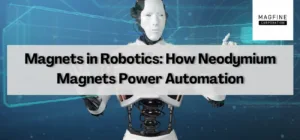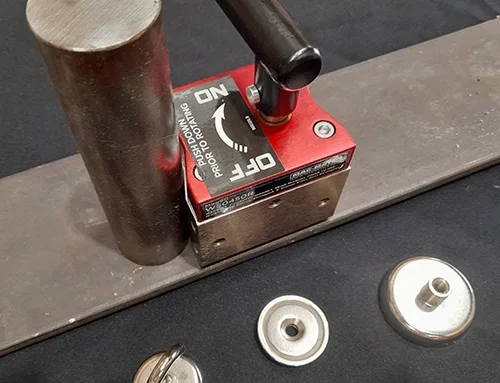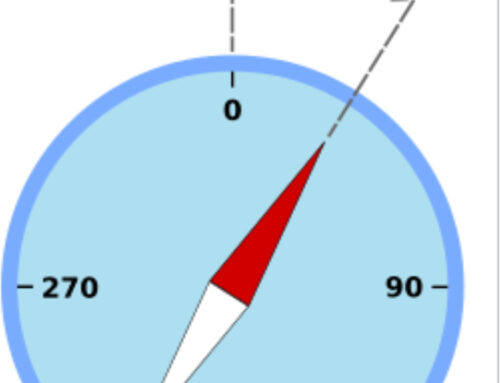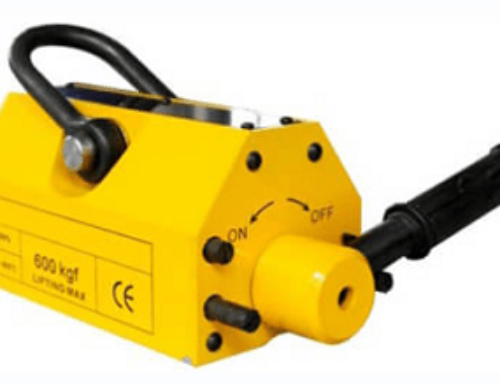Understanding Magnetic Actuators in Robotics
Magnetic actuators are essential components in robotic mobility, responsible for converting electrical energy into precise mechanical motion using magnetic fields. These actuators play a critical role in enabling smooth, accurate movement in various robotic systems.
Types and Working Principles
The primary types of magnetic actuators used in robotics include:
- Electromagnetic Actuators: Use an electric current to generate magnetic fields, causing movement.
- Permanent Magnet Actuators: Rely on the interaction between permanent magnets and coils to produce motion.
- Hybrid Actuators: Combine permanent magnets with electromagnets for enhanced control and efficiency.
Their working principle centers on magnetic forces generated by these components to create controlled torque or linear motion, enabling precision robotic movements.
Comparison With Other Actuator Types
| Actuator Type | Advantages | Limitations |
|---|---|---|
| Magnetic Actuators | High torque density, precision control, fast response | Sensitivity to magnetic interference, requires quality magnetic materials |
| Hydraulic Actuators | High force output | Bulky, complex maintenance |
| Pneumatic Actuators | Lightweight, cost-effective | Lower precision, compressibility issues |
| Electric Motors | Precise control, compact | Can suffer heating issues, limited torque density |
Magnetic actuators stand out for their rapid response, energy efficiency, and fine positional accuracy, making them ideal for robotic mobility applications.
Importance of Magnetic Material Quality
The performance of magnetic actuators heavily depends on the quality of magnetic materials used. High-grade materials such as NdFeB (neodymium-iron-boron) magnets provide:
- Stronger magnetic flux density
- Better thermal stability
- Improved durability and longevity
Selecting superior magnetic materials ensures consistent actuator performance, reduces energy consumption, and enhances the overall reliability of robotic systems. For a deeper understanding of magnetic material properties impacting actuator behavior, explore magnetic permeability and magnetic hysteresis concepts.
Key Performance Metrics of Magnetic Actuators
When choosing high-performance magnetic actuators for robotic mobility, several key factors come into play.
Torque density and precision control
Magnetic actuators deliver high torque in a compact size, critical for tight robotic designs. This torque density enables smooth, precise movements—which is essential for robots performing delicate tasks or navigating complex environments.
Response speed and efficiency
Fast response times allow robots to react quickly, improving real-time control and agility. Magnetic actuators are known for their energy efficiency, reducing power consumption and extending battery life in mobile robots.
Durability and thermal stability
Robotic systems often run in demanding environments. Magnetic actuators must withstand heat and mechanical stress without performance loss. Quality magnetic materials help maintain actuator stability and long operational life under variable temperatures.
Miniaturization potential
As robotics trends toward smaller, more versatile devices, magnetic actuators supporting miniaturization become crucial. Their ability to maintain high torque and precision at a small scale opens doors for compact drones, legged robots, and wearable robotic solutions.
By focusing on these metrics, you ensure the magnetic actuator you choose meets the demands of today’s advanced robotic mobility solutions. For deeper insight into magnetic material impact, check our page on magnetic materials in motor technology.
Innovations in High Performance Magnetic Materials
Magnetic materials have come a long way, pushing the limits of what robotic actuators can do. Recent advancements focus on boosting torque density, improving thermal stability, and enhancing precision—all critical for smooth robotic mobility. High-performance magnets now deliver stronger magnetic fields with less energy loss, which directly uplifts actuator efficiency and responsiveness.
NBAEM’s magnetic materials stand out because they combine powerful rare earth elements like NdFeB with advanced manufacturing techniques. This leads to magnets that are not only strong but also durable under harsh operating conditions. For robotic actuators, this means better torque output, longer service life, and consistent performance even in compact designs where space is tight.
Customization is another big win with NBAEM. They tailor magnetic properties to specific robotic mobility needs—whether it’s for wheeled robots needing quick response or drones requiring lightweight, high-torque actuators. This flexibility helps engineers optimize actuator performance exactly where it matters most, creating robotic systems that are both efficient and reliable.
Practical Applications of Magnetic Actuators in Robotic Mobility

Magnetic actuators play a key role in improving the performance of various robotic systems across the US market. Whether it’s wheeled robots navigating warehouses, legged robots handling rugged terrain, drones managing precise flight controls, or collaborative robots working alongside humans, these actuators deliver reliable power and accuracy.
Wheeled Robots
Magnetic actuators offer high torque density and smooth control, enabling wheeled robots to carry heavier loads with better speed and maneuverability. This is crucial in logistics and manufacturing where efficiency matters most.
Legged Robots
In legged robots, precise movement control is essential to mimic natural walking or running. Magnetic actuators provide the finesse and responsiveness required for balance and adaptability over uneven surfaces.
Drones
For drones, actuator response speed and energy efficiency directly impact flight stability and battery life. Magnetic actuators help maintain tight control over rotors while reducing overall energy consumption, extending operational range.
Collaborative Robots
Cobots benefit from magnetic actuators’ precise and silent operation, ensuring safe and smooth interaction with human workers in factories or healthcare settings.
Industry Examples
- A US-based warehouse robot manufacturer adopted high-performance NdFeB magnetic actuators, improving load capacity by 30% and cutting downtime.
- Robotics startups developing delivery drones use magnetic actuators to achieve longer flight times, minimizing energy use while maintaining precision.
- Collaborative robotic arms in automotive plants incorporate magnetic actuators to enhance repeatability and reduce maintenance cycles.
Impact on Energy Efficiency and Lifespan
Magnetic actuators boost energy efficiency by offering higher torque with less power draw compared to traditional actuators. Their thermal stability also protects performance during extended operations, extending the robotic system’s overall lifespan. This benefits businesses focused on lowering operational costs and maximizing uptime.
Design Considerations for Integrating High Performance Magnetic Actuators
Choosing the right magnetic actuator for your robotic mobility project starts with understanding the specific needs of your robot. Key factors include the desired torque, precision, speed, size constraints, and energy efficiency. High torque magnetic actuators are ideal for heavy-duty tasks, while precision control actuators suit delicate robotic movements. Also, consider the environment—temperature swings and operational stresses impact actuator durability.
Integration can pose challenges such as aligning the actuator with existing mechanical systems, managing thermal loads, and ensuring reliable electrical connections. Solutions often involve close collaboration between design engineers and magnetic actuator suppliers to tailor components that fit perfectly with your robotic design. NBAEM offers valuable support in this area with custom magnetic materials like NdFeB magnets and SmCo magnets that optimize both performance and compactness.
Teaming up with NBAEM brings advantages:
- Expert guidance on selecting magnetic materials suited for your mobility application
- Assistance in overcoming integration hurdles with design consultations
- Access to high-quality, certified magnetic materials that meet U.S. industry standards
Leveraging NBAEM’s expertise ensures your magnetic actuators not only enhance robotic mobility but also deliver consistent, energy-efficient performance. For more on magnetic materials’ industrial use, check out NBAEM’s insights on industrial applications of magnetic materials.
Future Trends in Robotic Mobility Powered by Magnetic Actuators
Magnetic actuators are set to play a major role in shaping the future of robotic mobility. We’re seeing advances in smart magnetic materials that respond dynamically to changing conditions, improving efficiency and precision. AI-driven control systems are also becoming a game-changer, allowing actuators to adjust in real time for smoother, more adaptive robotic movements.
The market outlook for magnetic actuators in robotics remains strong, especially as demand grows for energy-efficient, high-torque solutions that fit into compact designs. More industries are adopting magnetic actuator technology to boost performance while keeping power consumption low.
At NBAEM, the focus is clear: pushing R&D into more specialized magnetic materials that meet the unique challenges of robotic mobility. This includes developing stronger, more stable magnets that offer high torque density and thermal stability. We’re also exploring customization options to help robotics manufacturers innovate faster with tailored magnetic solutions, supporting next-generation mobility systems across sectors.
These future trends show just how magnetic actuators will remain central to robotics, especially here in the U.S., where efficient and precise mobility solutions are critical for automation, logistics, and advanced robotics. For deeper insights on magnetic materials impacting robotics, check out NBAEM’s work on recent advances in magnetic material research and magnetic materials in motor technology.





Leave A Comment